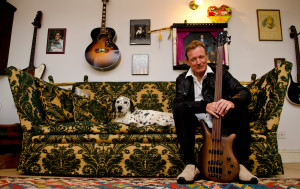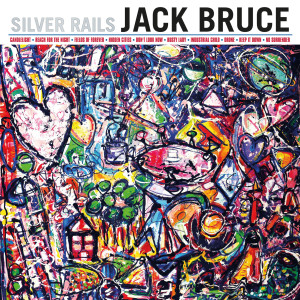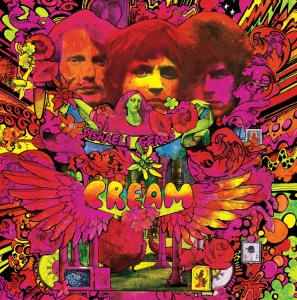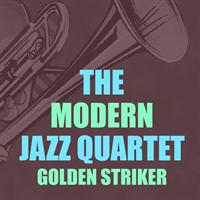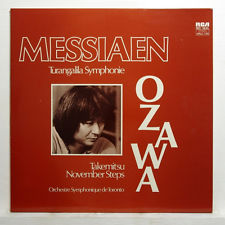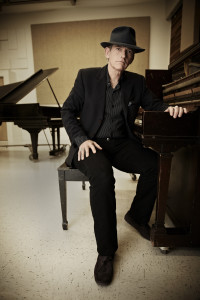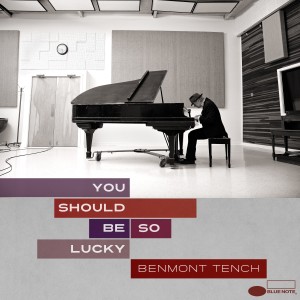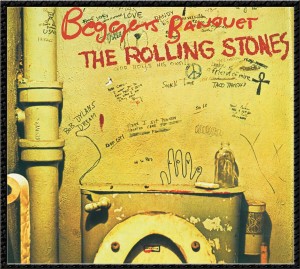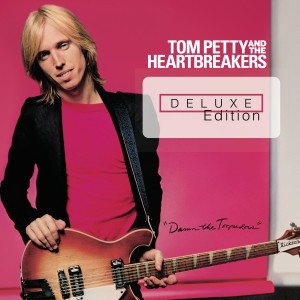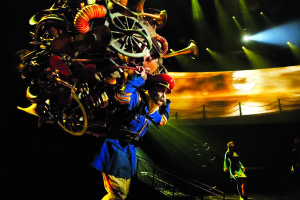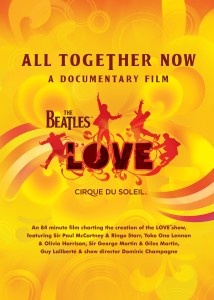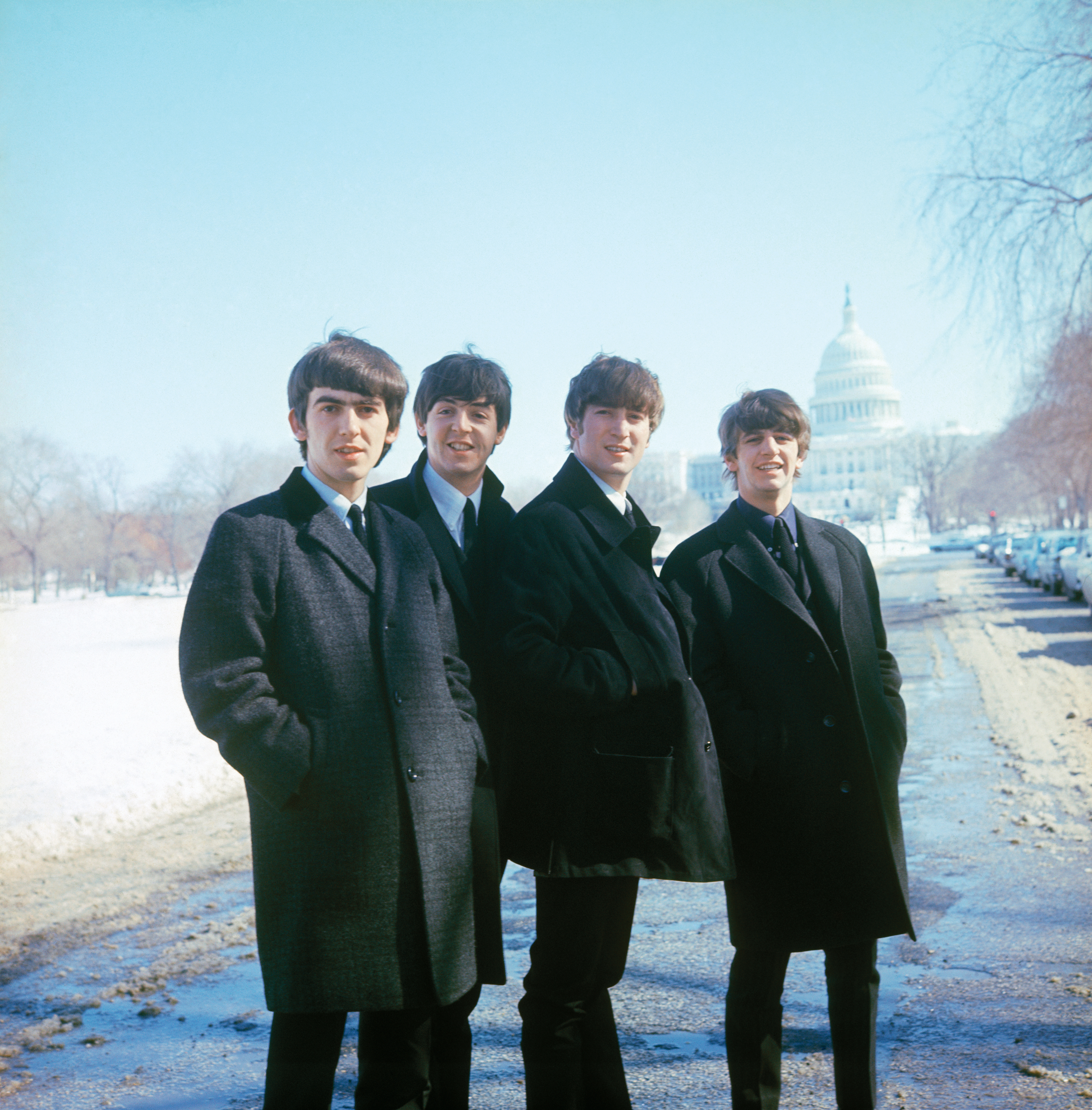The bottom end has never been quite the same since Jack Bruce picked up his first bass over 6 decades ago. The vaunted Cream bassist wrote the book on the art of the low-end hook, as his syncopated approach to playing bass helped shift pop music’s bottom-end emphasis away from just laying down root notes and fifths, in turn opening the door to a more adventurous yet melodically inclined style that laid the foundation for the rock explosion of the ’60s. Turns in both Manfred Mann and John Mayall’s bands set the table for Bruce to connect with Eric Clapton and Ginger Baker and forge Cream, wherein the super Scotsman set the heavy-blues power-trio standard with epic runs and full-band interplay in songs like “I Feel Free,” “Spoonful,” “Politician,” and “Sunshine of Your Love.”
Once Cream curdled, Bruce delved further into ... Read More »]]>
The bottom end has never been quite the same since Jack Bruce picked up his first bass over 6 decades ago. The vaunted Cream bassist wrote the book on the art of the low-end hook, as his syncopated approach to playing bass helped shift pop music’s bottom-end emphasis away from just laying down root notes and fifths, in turn opening the door to a more adventurous yet melodically inclined style that laid the foundation for the rock explosion of the ’60s. Turns in both Manfred Mann and John Mayall’s bands set the table for Bruce to connect with Eric Clapton and Ginger Baker and forge Cream, wherein the super Scotsman set the heavy-blues power-trio standard with epic runs and full-band interplay in songs like “I Feel Free,” “Spoonful,” “Politician,” and “Sunshine of Your Love.”
Once Cream curdled, Bruce delved further into flexing his compositional and jazz chops, as evidenced by his 1970 free-form fusion precursor Things We Like and 2012’s improv-driven, self-titled group tribute to late jazz drummer Tony Williams, Spectrum Road. Silver Rails, his first solo studio effort in 10 years, brings his career-long broad genre explorations under one roof, and it’s packed with primo Jack: the brooding, confessional “Reach for the Night,” the heartfelt piano ballad “Industrial Child,” and the pummeling, deep fuzz of the aptly named “Drone.” Here, Bruce, 70, and I discuss how Rails got on track, cutting sides at Abbey Road Studios, and the eau de Cream. One thing’s for absolute sure: Bruce remains the cream of the crop.
Mike Mettler: Tell me what it was like working at Abbey Road Studios when you were making Silver Rails.
Jack Bruce: It was amazing. Studio One there is so huge. They have the greatest microphone collection in the world; so astounding. There’s a whole department where they have guys who just look after the old mikes. So who knows — you might be singing into the same mike that John Lennon sang into. [chuckles]
It has quite a vibe when you’re in there. It definitely feels different. I think all the musicians I had with me brought their games up a notch because of respect for what’s gone on there — not just The Beatles and Pink Floyd, but all the way back to [noted English composer] Sir Edward Elgar.
Mettler: You’d recorded there before, right?
Bruce: Yes, the first time was in 1965 [for The Graham Bond Organisation's The Sound of '65], quite a while ago. [laughs] I’ve been in and out of there over the years, but not quite as much recently.
Mettler: Would you consider Abbey Road to be one of your favorite studios to record in?
Bruce: I would say, today, it’s the greatest studio in the world. Partly because of the rooms, which are iconic, partly because of the ambience, and partly because of the way they look after it all. Most studios nowadays have a lot of downtime because a lot of things are often going wrong. You don’t get that at Abbey Road. All of the people who work there are very enthusiastic and very, very good at their jobs.
Mettler: Agreed. I’ve met a few of them myself, like Guy Massey and Paul Hicks —
Bruce: Paul is great. And I was very lucky to be able to use Rob Cass, who’s an in-house producer. In fact, it was his idea that I go to Abbey Road and make the record there.
Mettler: Were there any special production choices you made specifically because you were at Abbey Road?
Bruce: I wouldn’t exactly say that, but one of the great things about Abbey Road is, if you use Studio Two and Studio Three as I did, there’s such a great selection of grand pianos! [laughs] You don’t think of things like that beforehand, but they’re always perfectly tuned and immaculate. They had a wonderful Bernstein, a Steinway, and an amazing Yamaha that I didn’t even manage to get to put on the album.
Mettler: One of the things I like about the sound of Silver Rails is that I get a sense of the musician interplay in the same room. There’s a lot to be said for recording everybody looking at each other instead of just dubbing everything.
Bruce: There is a lot to be said for that, yes. I like a little bit of both. Sometimes I like to start off a song very minimally and record the guitar, the piano, and the drums together, and then overdub. A song like “Industrial Child” is like that. It was done very much live, and I wouldn’t do it any other way if I could. I love playing with incredible musicians like that. I wouldn’t want them to just send me a wav file. There’s none of that going on here.
Mettler: Besides “Industrial Child,” do you have any favorite moments for you behind the piano?
Bruce: I think “Hidden Cities,” because that was such a challenge. It was challenging music. Here’s a very strange story that I’ll tell you. When I was very ill about 10 years ago [Bruce had a liver transplant in 2003], I was in an induced coma for a few weeks, and I started writing all of this music while I was comatose — and I remembered a lot of it. The second, sort of quiet part of that song was one of the things I wrote when I was in that condition. It was like experiencing rising light and sound, and I thought, “How am I going to achieve that? How am I going to realize that in actual, practical, physical music?” I didn’t know if I’d ever be able to replicate that piece of music, but we actually got it fairly quickly, with Cindy [Blackman] Santana on drums and Uli John Roth on guitar. The harmonies were done by a group my daughter put together, called Aruba Red. She put together this amazing group of young women. And it was not the easiest thing to sing. They really went for it, and I’m really proud of them.
Mettler: Wow, that’s amazing you were able to bring that all to life.
Bruce: Quite remarkable, yes.
Mettler: One of my favorite songs has to be “Drone,” which is quite heavy, and basically feels like your Black Sabbath track. Did you play that live in the studio and the overdub it later?
Bruce: I was using my old Gibson EB-1 [violin bass], which has got this incredible sound, almost like a barn door. [both laugh] I used a pedal for the effects, but I don’t even know what it’s called. It was given to me by this guy in Japan — he came up to me at a concert and just handed it to me. It’s an incredible pedal, but it doesn’t even have a name on it or anything.
Mettler: Just call it the JB-1, since it’s now officially your own drone. I also heard some planes ready to crash around me at any moment on there.
Bruce: Yeah, the airplane overdub.
Mettler: In the intro, is that just amp buzz and feedback when you’re starting up?
Bruce: It is, yeah; nothing else. And very good miking. And a little bit of pre-amping is always nice. But you do have to go for separation to a certain extent. It’s a be-all and end-all for me.
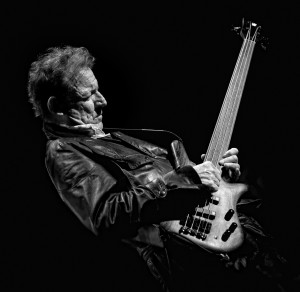 Mettler: Another thing I like is that the tonal character of your voice is still fantastic. What’s the secret? How have you been able to maintain it all these years?
Mettler: Another thing I like is that the tonal character of your voice is still fantastic. What’s the secret? How have you been able to maintain it all these years?
Bruce: [laughs] I don’t know! I don’t have any magic thing I do. Well, I was actually a classically trained singer, and I think that helps, since I know which muscles to use, and not. Every style of singing is valid in my book, but if you want to be singing at a certain level for 40 years or more over your lifetime, well, it’s a good idea to know about how to use those muscles.
Mettler: Since you continue to play live, we the audience still want to hear those qualities in your voice, especially when you sing falsetto and the more delicate parts.
Bruce: There is an almost falsetto, “head” voice that I use, and always have, especially with Cream. On “I Feel Free,” for instance, I used that head voice.
Mettler: And you still play that song live, right?
Bruce: I have done “I Feel Free,” yes. I used to do it when I played with Ringo [Starr, on his recurring All-Starr Band tours]. But normally, I don’t do that [with my solo band] because it needs all of those other vocals, you know. There are a lot of vocals on there, so unless I have a big vocal group, I can’t do it, really.
Mettler: Speaking of Cream, I’ve enjoyed the higher-grade LP reissues of the core catalog. And I have to say “Tales of Brave Ulysses” is one of my favorite Cream tracks to spin on vinyl.
Bruce: I agree, “Ulysses” is great on vinyl. I think “I Feel Free” could still be vastly improved — that one was recorded quite badly. It might be nice to tinker with that someday, but I don’t think the master tapes exist anymore. I think a lot of them were destroyed in a fire in Holland.
Mettler: That’s a shame. Well, I do think “Sunshine of Your Love” sounds as vibrant as ever on LP.
Bruce: I still enjoy all those songs, really. I play very different versions of them now.
Mettler: How do you rearrange a song like “Sunshine“?
Bruce: My touring band at the moment is an 8-piece. I have another bass player so I can play piano some of the time, and I’ve got three great horn players. So it’s great to be able to rearrange “Sunshine” for that group, you know. About a year or so ago [on November 11, 2012], I sat in with Carlos Santana in Las Vegas, and we did his [Guitar Heaven] version of it. [Santana has a recurring residency at the House of Blues at Mandalay Bay in Las Vegas. They played “Spoonful” that night too—The SoundBard]
Mettler: Even today, I think people undervalue the way a song like “White Room” was arranged.
Bruce: And also the way it’s written was quite a little bit different. That’s what I always wanted to do: Write songs that had a little twist in them. And that one wasn’t too off the wall for that band.
Mettler: I got to see one of the Cream reunion shows at Madison Square Garden in New York [on October 26, 2005], and I liked the approach you guys took, which was often different from the original recordings. You must have enjoyed that level of freedom.
Bruce: Yes, thanks. As you mature and get older, you’re going to play things differently. I like to listen to people who are still making vital music — people like Bob Dylan, even if some people don’t seem to like his voice now. I love anything he does. Together Through Life [2009] — that’s a good album.
Mettler: It sure is. As far as I’m concerned, Dylan should keep doing whatever he wants to do as long as he wants to do it.
Bruce: I don’t blame him. You’ve got the right to do that as an artist.
Mettler: And so do you! Ok, let me jog your memory even more. Do you remember the first record you ever bought with your own money?
Bruce: Yeah! The first one was Golden Striker [1957], by The MJQ, The Modern Jazz Quartet. When I was at college, I saw them live, and I went out and bought this EP.
Mettler: That was when you were at the Royal Scottish Academy?
Bruce: Exactly. I tried to bring it in for my professors to listen to, but they didn’t want to know about it. I had gone to see The MJQ in concert, in Glasgow. And I found their bass player, Percy Heath, was very inspirational.
Mettler: So that’s what made you decide to pursue the low end, literally?
Bruce: Yeah, absolutely. I had heard Ray Brown, Percy Heath, and Charles Mingus, of course. And that’s why I fell in love with the double bass.
Mettler: The melodic bass style that people almost take for granted today was really your bailiwick. You set that table.
Bruce: Yeah, that was my deliberate attempt to do that. I wanted to do that because, at that time, I heard James Jamerson [the Motown bassist], and I liked what he was doing, so I wanted to go for that whole melodic style. I used the jazz approach and applied it to bass guitar.
Mettler: While I’ve been enjoying Silver Rails on CD and digitally, I’m very pleased to see that it is coming out on vinyl.
Bruce: It is, yeah, but unfortunately minus “No Surrender” [the last track on the CD version]. We just couldn’t squeeze it on. It would have been a little too much for the sound quality.
Mettler: Is vinyl the format you prefer as a listener?
Bruce: I like vinyl, but then again, I’ve always liked whatever is new. [chuckles] I like the convenience of CDs, I must admit. And obviously, I’ve got a smartphone like everybody else, and hundreds if not thousands of tunes on there as well. It’s quite remarkable what you can have on such a little device.
Mettler: For a record like Silver Rails, considering the amount of detail — the organ interplay with the horns, and a lot of the cymbal work — it seems to me that you’ll get a lot more out of it by listening on vinyl.
Bruce: I totally agree. I love vinyl. I don’t buy new vinyls that much, because I’ve got such a big collection from the ’60s and onwards. I even have some very old pre-vinyl records — you know, the shellac ones, some even from the ’30s and so on. The sound quality of those — I mean, obviously, it’s a bit scratchy, but the way they were able to record in the ’30s is just remarkable, often using only one microphone. I’ve got a [French composer Joseph-Maurice] Ravel piece that’s conducted by him, and some Louis Armstrong Hot Five and Hot Seven sides. The way they did it, just by setting up — the louder you were, the further away you were. I don’t know how they managed that, to get that incredible sound.
Mettler: Any other favorite records you can mention?
Bruce: I like a lot of classical music. There’s a wonderful recording by [Seiji] Ozawa, a Japanese conductor, of the Messiaen Turangalila Symphony [1967] that’s remarkable. There is an argument to be made for both vinyl and digital for classical music. The clarity of digital can be quite useful, but sometimes it can be quite, quite cold.
Mettler: I think having an appreciation for a wide variety of music — classical, jazz, blues, etc. — gives you a broader palette to draw from as a musician. Artists just starting out should take a cue from what you did and go all the way back to the source.
Bruce: They may think going all the way back means going back to Led Zeppelin, or something. Or Cream. [both laugh] Worth checking things out a bit further back than us, I think.
]]>“I don’t want to stop anyone from getting the CD, but vinyl is the truest way to hear this record,” says Benmont Tench about his new solo album, You Should Be So Lucky (Blue Note). “When you have Glyn Johns [The Rolling Stones, Eagles, The Who] recording something to tape, you really want to hear it on vinyl.” It’s hard to argue with the longtime Tom Petty & The Heartbreakers keyboardist, stepping out to be a frontman for the first time in his five-decades-long career. And spinning Lucky on 180-gram vinyl very much tells the tale of the details: the delicate brush drumwork and resonating bass on “Ecor Rouge,” the placement of the string quartet behind Tench’s organ lines on “Hannah,” and Tench’s deft touch on the ivories while a guitar solo caterwauls in the left channel on ... Read More »]]>
“I don’t want to stop anyone from getting the CD, but vinyl is the truest way to hear this record,” says Benmont Tench about his new solo album, You Should Be So Lucky (Blue Note). “When you have Glyn Johns [The Rolling Stones, Eagles, The Who] recording something to tape, you really want to hear it on vinyl.” It’s hard to argue with the longtime Tom Petty & The Heartbreakers keyboardist, stepping out to be a frontman for the first time in his five-decades-long career. And spinning Lucky on 180-gram vinyl very much tells the tale of the details: the delicate brush drumwork and resonating bass on “Ecor Rouge,” the placement of the string quartet behind Tench’s organ lines on “Hannah,” and Tench’s deft touch on the ivories while a guitar solo caterwauls in the left channel on the Professor Longhair N’awlins-style tribute “Wobbles.” Here, we wax on about the value of what you get in the grooves, his turntable and his favorite albums, and how to reach “The Grail.”
Mike Mettler: What was your sonic goal for the vinyl version of You Should Be So Lucky?
Benmont Tench: I wanted it to sound like the tape. I mean, it’s Glyn Johns producing! So we recorded to tape, no Pro Tools. The first hint of digital media was when it was mastered to CD. I just want people to hear it as close to the tape as possible. Chris Bellman did the vinyl mastering, and it sounds fantastic. It was important for me that we got the details across to those who would appreciate it. For example, at the beginning of the very first track, “Today I Took Your Picture Down,” there’s some air in the way the sticks drop onto the snare that’s just lovely.
Mettler: To me, that song has a modern, Southern Accents kind of feel to it.
Tench: Oh, nice. We didn’t think about it; we just started playing. I don’t know what Glyn said to the other musicians, but he encouraged me to play the song and not tell other people what to play — which was fine by me, because they’re all my friends. I love playing with them, and I learn something new every time. And it’s a live track. The vocal is live, and nobody punched anything in.
Mettler: And you recorded the band live off the floor, too. Me, I happen to like hearing bleedthrough. When something reverberates off of a snare drum because you’re right there in the room with it, that’s as real as it gets.
Tench: Exactly! You get the blending of the soundwaves of the two guitars mixing in with each other. And sometimes you get the vocal sound and piano sound on one mike, like we did on “Duquesne Whistle” and “Hannah.” Because I sing so quietly, they had to turn the mike up really loud, so we got the piano in the vocal mike. At one point on “Duquesne,” I asked Glyn, “Can I re-sing that one line?” and he said, “No, dear boy, you can’t. It can’t be done. No way.” [both laugh]
Mettler: I’m glad Lucky is spread out over four sides — and it has two bonus tracks, too. The side breaks are important for feeling the mood shifts on this record.
Tench: All I listen to are LPs, so it’s important to me to have the sides. You listen to four or five songs at a time; that’s a good chunk of music. Sides have their own character. And you can have a favorite side of an album, like we do with Exile on Main Street or The White Album.
Mettler: What kind of turntable do you have?
Tench: It’s a Pro-Ject model, one from the RM Series, the 5.1 SE, and I have the Blue Point No. 2 cartridge. It sounds like a million bucks. Steve Ferrone [drummer with the Heartbreakers] gave me some JBL 4408A studio monitor speakers to go with them. I’m old school. I haven’t gone surround yet. I’m sticking with stereo.
Mettler: What are some of your favorite albums to spin?
Tench: I love records that Bob Dylan made, especially the early funny ones. [both laugh] I really love John Wesley Harding. The one thing I know about Bob Dylan is that it’s a fool’s game trying to figure out Bob Dylan. I’ve learned that first hand. You think he’s saying something clever, and you find out he’s just telling the truth. But that’s what appeals to me about making music, you know?
Mettler: I do. The vinyl reissue of John Wesley Harding is so beautifully stark.
Tench: I don’t have the reissue because I have a really good original.
Mettler: You should get it. And get the Mobile Fidelity remaster of Blonde on Blonde too — it’s soooo good.
Tench: Oh good, it’s by Mobile Fidelity. I don’t trust most reissues unless they specifically say they’re from the analog tapes; a lot of them are done from a digital source. I think you get more of the original signal on vinyl than you do on a 16-bit CD anyway. Vinyl is still the better way to listen, even if the album was originally recorded digitally. I’ve never woken up and gotten lost in the music by listening to a CD. I dig the CD format a lot, but it doesn’t lead me down a rabbit hole like vinyl does. There’s something with the vinyl experience that just draws you in where you can taste it.
Mettler: Any particular record that takes you away every time?
Tench: Oh yeah: Beggars Banquet, Black and Blue... I could go on and on. My thought is, if you’re not listening to vinyl, you’re kind of cheating yourself. I know people have different tastes, and some people really like the sound of digital. MP3s are great for convenience when you travel, but that’s just about it. You’re cheated out of a lot of warmth and richness of any recording. MP3s are better than not listening to music at all, but still — you’re being cheated.
Mettler: Hard to disagree with you there. Back to Lucky being on vinyl. Putting it on four sides was good call, since it gives you room for the arrangements to breathe. There’s a lot of good bass content on “Blonde Girl, Blue Dress,” which kicks off Side 2, and especially the tambourine —
Tench: I love the way Tom [Petty] plays bass on that one. And that tambourine player, Ringo [Starr] — I think there’s a future for him. You should hear him behind a kit.
Mettler: That might be a good idea. You might want to suggest that to him.
Tench: If only he wasn’t such an unpleasant character. [both chuckle]
Mettler: It must be tough. No one wants to work with him every summer either… [We're both kidding, folks!]
Tench: Such a drag. Yeah, we put up with him. It took him all of one pass to play that.
Mettler: Someone once said to me, “Listening to Ringo play is like listening to someone’s heartbeat.” It’s so exact and in the pocket.
Tench: That’s what it is. That’s the beauty of it. And that’s what England had for a while. They had Ringo, Charlie [Watts], Mick Fleetwood, Keith Moon.,Topper [Headon] with The Clash… it’s the same thing: the heartbeat is still there. England had all these guys. And to me, Ringo was such a giant.
Mettler: Considering the way Lucky was essentially cut live in the studio, do you subscribe to the “less is more” theory of recording?
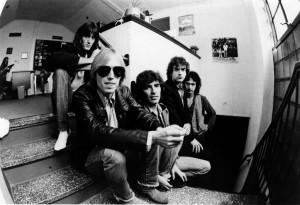
Damn Fine: Tom Petty (in shades) and the Heartbreakers in repose; Tench is second from right. Photo by Joel Bernstein.
Tench: Denny Cordell [the late producer and co-founder of Tom Petty’s first label, Shelter Records] told me a long time ago the reason some records sound so loud is because there’s less on them. And that makes me think of one of my favorite Heartbreakers songs, “Breakdown.” It has three guitars on it, but the essence of the record is Mike [Campbell]’s guitar lick, Tom [Petty]’s vocals, a solitary Wurlitzer, bass, and drums. It’s a very spare drum pattern. But when it comes on the radio, it catches your ear. It’s really got a lot of space. I think that’s the mark of a really good-sounding record.
We just captured a mood on that take. We had cut it earlier, and thought we had it. We had cut it with a grand piano, and it was a little bit different. But Tom called us back to the studio and said, “No.” So I think we maybe came back at 2 in the morning to recut it.
And it just takes that one moment. The good musicians can pretty much call up the moment. If the good bands, the good ensembles — whether they’re a gang of session musicians for [Van Morrison's] Moondance album, or a band like us — can catch what that wave is, you just grab onto it, and that’s The Grail. It’s “Twist and Shout,” “Things We Said Today,” “No Reply” — those songs are The Grail.
Mettler: The Heartbreakers always seem to find a few Grails whenever I see you live.
Tench: Thanks. Live playing is a more direct thing for me, where I don’t have to be cautious. You want to play a song like “Free Fallin’ ” as a pop song. Then you can do a song like “Runnin’ Down a Dream” as a hybrid. Because there isn’t any piano on that record, I can totally barrelhouse it up. When we play “(I’m Not Your) Steppin’ Stone” or “When the Time Comes” from the second record [You’re Gonna Get It!], it’s just basic, stripped down, simple rock and roll. And that’s what I really love about what we do in The Heartbreakers.
]]>“Love is all around you.” It’s a phrase that enveloped me in full during the climax of The Beatles — LOVE. My reaction? “Yeah yeah yeah!” The 7:00 p.m. performance on January 10, 2014 was my fifth time seeing this Cirque du Soleil extravaganza in its 7 years (and counting) at The Mirage in Las Vegas. I was perfectly positioned in Section 200 in Row M, Seat 13, for what was going to unfold here, there, and everywhere around me. And you really do need to attend LOVE multiple times to absorb all of the many nuances of its sensory-overloading A/V spectacle.
LOVE is a visual tour de force — a hallmark of all Cirque productions — tracing The Beatles’ WWII roots alongside the idealism and eventual denouement of the ’60s up through the present day. The custom-built theater ... Read More »]]>
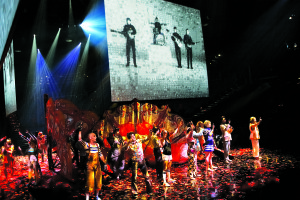
Peace and LOVE: The cast and The Fabs, all together now. Photo by Tomas Muscionico. Costumes by Philippe Guillotel.
“Love is all around you.” It’s a phrase that enveloped me in full during the climax of The Beatles — LOVE. My reaction? “Yeah yeah yeah!” The 7:00 p.m. performance on January 10, 2014 was my fifth time seeing this Cirque du Soleil extravaganza in its 7 years (and counting) at The Mirage in Las Vegas. I was perfectly positioned in Section 200 in Row M, Seat 13, for what was going to unfold here, there, and everywhere around me. And you really do need to attend LOVE multiple times to absorb all of the many nuances of its sensory-overloading A/V spectacle.
LOVE is a visual tour de force — a hallmark of all Cirque productions — tracing The Beatles’ WWII roots alongside the idealism and eventual denouement of the ’60s up through the present day. The custom-built theater houses (yes) 6,000 speakers, all in service of a spectacular surround-sound mix supervised by original Beatles producer Sir George Martin and his son Giles Martin. Giles told Sound & Vision in 2009, “For LOVE, I took the material and layered it deliberately. When you extract and separate elements too much, quite often they don’t gel as well as they used to.”
There’s no better example of the proper gel than the carnival aesthetic of “Being for the Benefit of Mr. Kite!” threading beautifully with the low-end crunch of “I Want You (She’s So Heavy),” the abject fury of “Helter Skelter,” and the cacophonous, all-encompassing buildup and release of “A Day in the Life.” And the show-ending “All You Need Is Love,” seen at the very toppermost of this post, is a full-channel wonder awash with horns, harpsichord, harmonies, and peace-sign-flashing singalong exuberance.
While I could go on and on… I’m sorry, but it’s getting very near the end. To borrow a line from a certain Johnny Rhythm, I think they passed the audition.
Can’t get to Vegas to see LOVE anytime soon but still want to partake in the 50th anniversary of The Fab Four hitting the U.S. shores? (Hey, tomorrow never knows.…) Your next best bet is to check out The Beatles LOVE — All Together Now, A Documentary Film (on DVD or via download), which chronicles Cirque du Soleil’s journey to put forth such a massive show. Sir Paul McCartney, Ringo Starr, Sir George Martin, Yoko Ono Lennon, and Olivia Harrison are all on hand to give in-person input to Cirque founder Guy Laliberté and director/writer/show concept creator Dominic Champagne as the show is in its gestation stages (no pressure!). Notes Sir George of the audio, “We’re stretching the sounds, bending them.” Adds his son and co-producing partner Giles Martin, “If he [his dad] thinks it’s good, then it’s good.” And Sir Paul wryly observes, “What a f—ing great band we were.” (He ain’t wrong, you know.) Yeah, it’s quite f—-ing great, alright: the DTS 5.1 surround mix is beautiful and enveloping, and the panoramic views of the production and its presentation while it’s being worked through will totally knock you out. Sir George summarizes it just right: “Each generation as it grows up find The Beatles for itself. And it will go on.” Onward, one and all: Until you make the necessary pilgrimage to the Mirage, All Together Now is a fab, fab, fab way to Re-Meet The Beatles. A splendid time is guaranteed for all.
Bonus Tracks — He Said, He Said Department: Okay, consider this the “Her Majesty” portion of the proceedings. That is, here’s a few more bits from Giles Martin concerning his philosophy of surround sound and The Beatles: “Music in surround can be amazing, but it needs to be done the right way. It has its place — and it’s fantastic if you have the right speakers. As I said on my blog, “My proudest achievement with LOVE is that it made people listen again.”
“The original recordings were made beautifully, but quite often they were made for radio. We opened things up more for [Rock Band]. On the original of “I Want to Hold Your Hand,” for example, Ringo’s drums are rather quiet and the vocals are upfront because it was a radio track. We’d do a mix and actually play it in the game, and we’d find out that you can’t really hear the kick drum. So we’d go back and increase the dynamics on Ringo’s drums.”
“Of course, the sound does change with the venue. Take the rooftop concert. At first, it just didn’t feel right. So we put a slight slap on everything, because I thought it would sound like that if you were there; you’d get a slap off the surrounding buildings. With Shea Stadium, it’s a bigger space, obviously, so it has to sound bigger. It was important to us to have that attention to detail.”
]]>